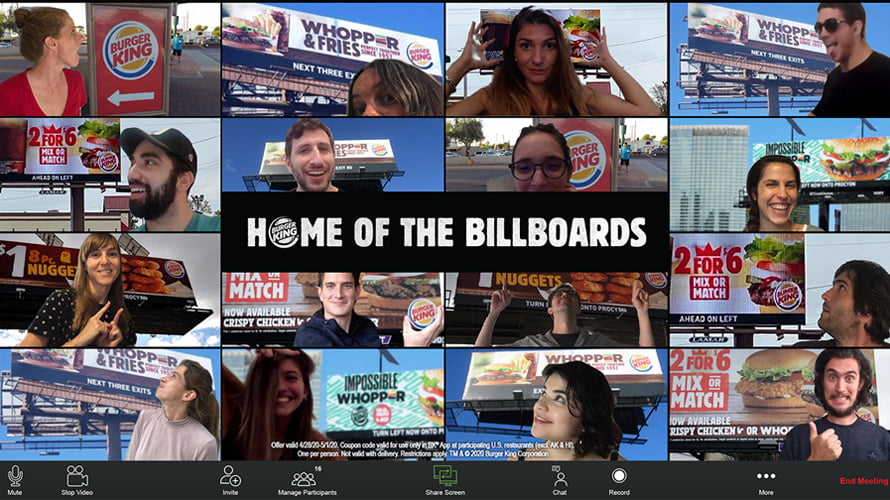
Planning The Path To Recovery For Digital Marketing
COVID-19 has affected every business in ways we could have never imagined, and digital marketing is just one of those areas. However, what happens when society starts to return to normal – or whatever the new normal might be? Brands must be prepared and begin planning the path to recovery. There are three areas marketers will need to look at to make sure they are delivering value to their customer.
Marketing
Although marketing spend may currently be lower than normal, companies should avoid removing all ad spend altogether to ensure they can still communicate and engage with their consumers.
When Burger King found they could no longer reach an effective audience through out of home media, they decided to move their campaign to a digital space and encourage people to use their billboards as their Zoom backgrounds. What did the consumer get from this? After posting about it on Twitter brand fans were rewarded with an app voucher for a free Whopper – a win for the customer and a win for the brand. Burger King drove brand awareness and therefore will likely drive app orders to their restaurants when they re-open.
Burger King is not just thinking about the now, how they can maintain a great reputation, they are also thinking how these campaigns will affect their business in the future. This will help prepare them when they begin their ‘bounce back’ marketing phase.
Brand
How your brand acts during and after the pandemic will be judged by millions so it is important to use public relations to build a reliable brand image and win customer support.
Be positive – this is a time of uncertainty and fear so being able to provide a positive spin or positive information will allow your brand to lend support and gain affinity in a mediasphere crowded with negative messaging.
Be honest – we have all experienced the frustration of misleading and clickbait-y headlines. During uncertain times honesty is cherished so ensure you are sharing information which is transparent and trustworthy. This will build long-term brand equity.
Be helpful – Business may be down but that doesn’t mean your brand isn’t hard at work. Show how you are assisting your customers and community. For example, gyms are promoting online classes, and activewear brand Gymshark are pledging £5 to the NHS for every #NHSSweatySelfie their fans post. By showing your brand is helping to rebuild society within the safety guidelines, people may form positive opinions that will outlast the coronavirus.
Value Chain
When we return to our new normal, it is almost certain that most companies will experience an increase in demand for their products or services. Therefore, it is important to build this into production planning and reflect this in your marketing plan. To monitor this, social listening tools and other online search trends can be used to understand how demand could evolve during and after the crisis and if consumer behaviour will also change. Companies must prepare so they can cope with the rising rate of demand and still live up to consumer expectations. The tourism sector in particular is expected to have an increase in demand as countries re-open borders and more travel is allowed. Search and social trends may give a clue as to when and where Brits are planning to visit in 2020.
Marketing, brand and value chain. These are three key areas to consider when planning your path to recovery. Through careful media planning, clever PR and judicious use of social and search intelligence, brands may find they can bounce back even stronger than before once COVID-19 is eradicated.


